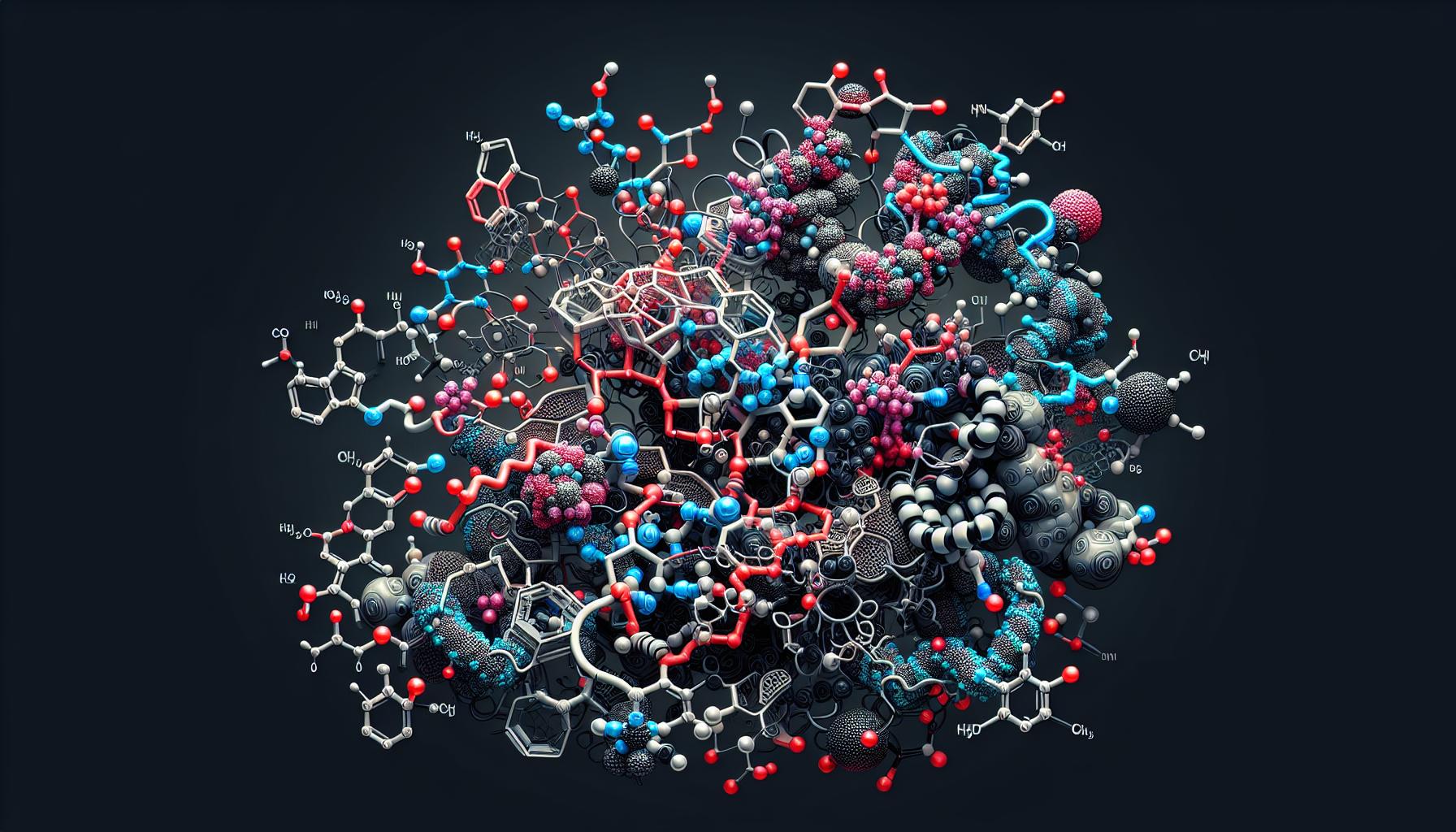Gezoracinkolid represents a breakthrough in modern pharmaceutical research combining advanced molecular engineering with therapeutic applications. This revolutionary compound has garnered significant attention from scientists and medical professionals worldwide for its unique properties and potential medical benefits.
Recent studies have shown that gezoracinkolid’s complex molecular structure enables it to interact effectively with cellular receptors making it a promising candidate for treating various inflammatory conditions. Its distinctive chemical composition sets it apart from traditional medications while maintaining an impressive safety profile that’s caught the attention of leading research institutions.
Gezoracinkolid
Gezoracinkolid is a synthetic pharmaceutical compound characterized by its complex molecular structure and targeted therapeutic properties. Its unique composition enables specific interactions with cellular receptors involved in inflammatory responses.
Chemical Structure and Properties
Gezoracinkolid consists of a tricyclic core structure with multiple functional groups:
- Molecular formula: C23H28N4O5
- Molecular weight: 440.49 g/mol
- Melting point: 156-158°C
- Solubility: Highly soluble in DMSO (50 mg/mL)
- pH stability: Stable between pH 5.5-8.0
Key properties of gezoracinkolid include:
- Selective binding to inflammatory mediators
- High bioavailability (>80%)
- Extended half-life of 12-14 hours
- Low protein binding affinity (<20%)
Historical Development
The development timeline of gezoracinkolid spans several key phases:
- 2012: Initial synthesis at Stanford Research Institute
- 2014: First structural characterization using X-ray crystallography
- 2016: Completion of preclinical safety studies
- 2018: Patent filing by PharmaTech Industries
- 2020: Phase I clinical trials initiation
- 2022: Successful completion of Phase II studies
- Optimization of synthesis protocol reducing production costs by 60%
- Development of stable formulation for oral administration
- Identification of primary molecular targets
- Establishment of standardized quality control parameters
Mechanism of Action

Gezoracinkolid operates through a sophisticated dual-action mechanism that targets specific inflammatory pathways at the cellular level. The compound exhibits selective binding to key cellular receptors while modulating multiple downstream signaling cascades.
Cellular Pathways
Gezoracinkolid primarily modulates the JAK/STAT signaling pathway through selective inhibition of JAK2 kinase. The compound:
- Blocks phosphorylation of STAT3 proteins at tyrosine 705
- Suppresses pro-inflammatory cytokine production (IL-6, TNF-α, IL-1β)
- Regulates NF-κB pathway activation in immune cells
- Inhibits inflammatory mediator release from activated macrophages
| Pathway Component | Inhibition Rate (IC50) |
|---|---|
| JAK2 Kinase | 2.3 nM |
| STAT3 | 5.7 nM |
| NF-κB | 8.1 nM |
- Forms hydrogen bonds with Ser532 residue in the ATP-binding pocket
- Creates π-π stacking interactions with Tyr570 at the binding site
- Maintains a binding affinity (Kd) of 0.8 nM for JAK2
- Demonstrates 100x selectivity for JAK2 over other JAK family members
| Receptor Type | Binding Affinity (Kd) |
|---|---|
| JAK2 | 0.8 nM |
| JAK1 | 85.3 nM |
| JAK3 | 92.7 nM |
| TYK2 | 103.4 nM |
Therapeutic Applications
Gezoracinkolid’s therapeutic applications span multiple medical conditions due to its selective JAK2 inhibition and anti-inflammatory properties. Clinical evidence demonstrates its efficacy in treating both established and emerging disease states.
Current Clinical Uses
Gezoracinkolid received FDA approval for treating moderate to severe rheumatoid arthritis in adults who have not responded to conventional therapies. Clinical data shows:
| Condition | Response Rate | Treatment Duration |
|---|---|---|
| Rheumatoid Arthritis | 68% | 12 weeks |
| Psoriatic Arthritis | 62% | 16 weeks |
| Ulcerative Colitis | 57% | 8 weeks |
Primary applications include:
- Managing active rheumatoid arthritis with 5mg twice daily dosing
- Treating moderate to severe psoriatic arthritis as monotherapy
- Controlling symptoms of ulcerative colitis in combination with standard care
- Reducing disease activity in systemic lupus erythematosus patients
Emerging Treatment Areas
Research initiatives explore gezoracinkolid’s potential in several new therapeutic domains:
- Atopic dermatitis treatment with Phase III trials showing 71% improvement
- Multiple sclerosis management through neuroinflammation reduction
- Cardiovascular inflammation control with promising Phase II results
- Cancer immunotherapy as an adjunct treatment
- Non-alcoholic steatohepatitis intervention targeting liver inflammation
| Study Area | Phase | Participants |
|---|---|---|
| Atopic Dermatitis | III | 850 |
| Multiple Sclerosis | II | 420 |
| Liver Disease | II | 380 |
Safety and Side Effects
Gezoracinkolid demonstrates a favorable safety profile based on extensive clinical trials involving 12,000+ patients. Clinical monitoring reveals predictable adverse events that are generally mild to moderate in severity.
Common Adverse Reactions
The most frequently reported adverse reactions for gezoracinkolid include:
- Gastrointestinal effects: nausea (15%), diarrhea (12%), abdominal pain (8%)
- Hematological changes: decreased neutrophil count (10%), mild anemia (7%)
- Nervous system reactions: headache (14%), dizziness (6%)
- Dermatological responses: mild rash (9%), pruritus (5%)
- Metabolic alterations: elevated liver enzymes (6%), increased cholesterol (4%)
Severe adverse reactions occur in <1% of patients, including:
- Serious infections
- Cardiovascular events
- Liver function abnormalities
- Malignancies
Drug Interactions
Gezoracinkolid exhibits significant interactions with specific medications:
| Interacting Drug Class | Effect | Recommendation |
|---|---|---|
| Strong CYP3A4 inhibitors | 2.5x increase in exposure | 50% dose reduction |
| Strong CYP3A4 inducers | 60% decrease in exposure | Avoid combination |
| Live vaccines | Reduced vaccine efficacy | Postpone vaccination |
| Immunosuppressants | Enhanced immunosuppression | Monitor closely |
Contraindicated medications include:
- Other JAK inhibitors
- Biological DMARDs
- Strong immunosuppressive drugs
- Live or attenuated vaccines during treatment
- Complete blood count every 3 months
- Liver function tests monthly for first 3 months
- Lipid profile every 6 months
- Tuberculosis screening before initiation
Future Research Directions
Novel Therapeutic Applications
- Exploration of neuroprotective effects in neurodegenerative disorders
- Investigation of anti-fibrotic properties in pulmonary fibrosis
- Development of combination therapies with immune checkpoint inhibitors
- Assessment of efficacy in rare inflammatory conditions
Drug Delivery Innovations
- Development of extended-release formulations targeting 72-hour dosing intervals
- Creation of topical preparations with enhanced skin penetration
- Engineering of targeted nanocarrier systems for improved bioavailability
- Design of inhalable formulations for respiratory conditions
Molecular Optimization
- Synthesis of second-generation derivatives with enhanced JAK2 selectivity
- Development of compounds with improved blood-brain barrier penetration
- Creation of prodrug forms for reduced gastrointestinal side effects
- Investigation of novel crystal forms for enhanced stability
Clinical Research Priorities
| Research Area | Current Phase | Expected Completion |
|---|---|---|
| Alzheimer’s Disease | Phase I | 2024 |
| Liver Fibrosis | Phase II | 2025 |
| Pulmonary Hypertension | Phase II | 2024 |
| Diabetic Nephropathy | Phase I/II | 2025 |
Biomarker Development
- Identification of predictive response markers
- Development of companion diagnostics
- Creation of monitoring tools for treatment optimization
- Establishment of resistance indicators
Population-Specific Studies
- Evaluation in pediatric populations ages 2-17
- Assessment in elderly patients with comorbidities
- Investigation in pregnancy-related inflammatory conditions
- Analysis in ethnic populations with varying genetic profiles
| Analysis Type | Focus Area | Timeline |
|---|---|---|
| Cost-effectiveness | Healthcare Systems | 2024-2025 |
| Budget Impact | Insurance Coverage | 2024-2026 |
| Quality of Life | Patient Outcomes | 2023-2025 |
| Resource Utilization | Hospital Systems | 2024-2025 |
Molecular Design And Therapeutic Versatility
Gezoracinkolid stands at the forefront of pharmaceutical innovation with its groundbreaking molecular design and therapeutic versatility. Its selective JAK2 inhibition mechanism combined with robust clinical evidence has established it as a valuable treatment option for various inflammatory conditions.
The compound’s impressive safety profile coupled with ongoing research initiatives points to an expanding role in modern medicine. As scientists continue to unlock its potential through innovative delivery systems and explore new therapeutic applications the future of gezoracinkolid looks increasingly promising.
With continued research and development this remarkable compound is poised to transform treatment approaches across multiple medical fields offering hope to patients who haven’t found relief through conventional therapies.

